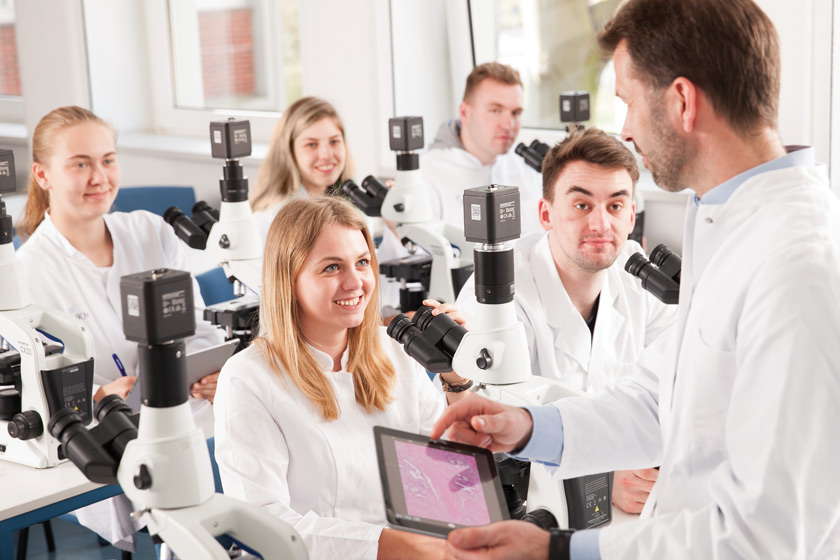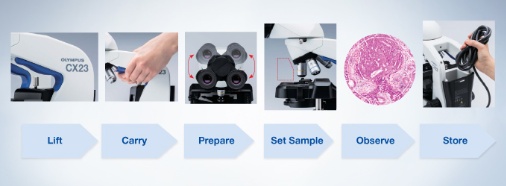Microscopes, both upright and stereo, play an important role in our educational system. Many of us probably used a microscope or stereoscope in high school or even before. These instruments enable students to observe very small structural details that are hard to see by eye, such as the structure of smooth muscle, cellular division, or the details of an insect. They also provide students with helpful hands-on experience instead of just reviewing images in a book or online. When looking to buy new educational microscopes, certain features should be reviewed, especially since these microscopes are used by many individuals and most of them may have no prior experience with microscopes.
1. Type of Microscope—Stereomicroscope vs. Upright Microscope
It is important to understand what the students will be reviewing during their curriculum. If the samples are large and require visualization at low magnification, then a stereomicroscope might be the best choice. Stereomicroscopes are great for biology dissections and looking at insects, plants, bones, fossils, rocks, minerals, metals and many other materials. Stereomicroscopes provide a nice three-dimensional view of the specimen and enable students to review the sample in more detail. They also provide a long working distance and easy access to samples.
If you are viewing microscopic samples at high magnification, then an upright microscope is the best choice. Many of these samples are typically placed on a glass slide, fixed, and stained. However, you can also view unstained samples (which tend to be low contrast) using brightfield illumination by closing the aperture stop to increase the contrast. An upright microscope is great for visualizing bacteria, fungi, mold spores, skin cells, tissue sections, plant sections, and many other biological samples. The high magnification enables your students to visualize objects that cannot be seen by the naked eye.
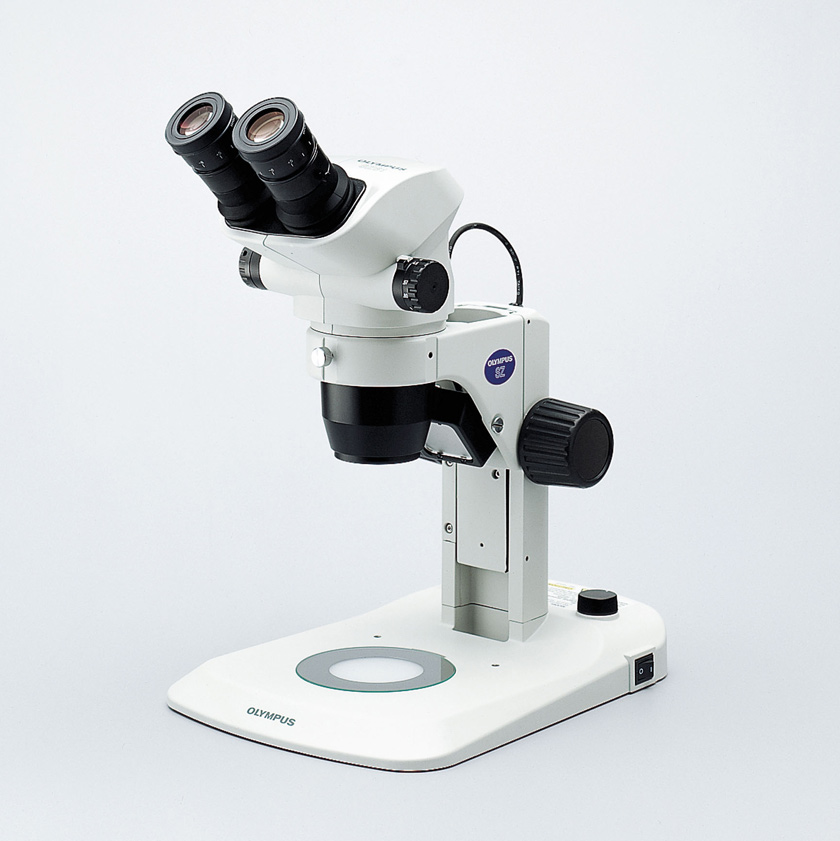 Stereomicroscope | 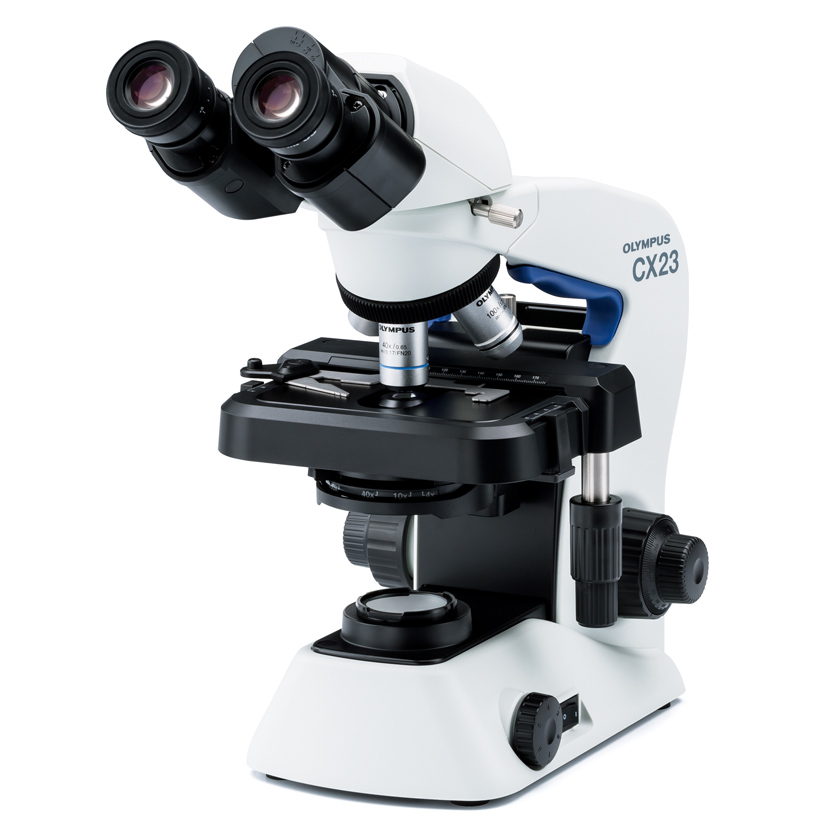 Upright microscope |
2. Size—Compact and Lightweight Equals Convenience
When looking to buy or replace your microscopes or stereoscopes, it is important to think about the size of the units, especially if these will be moved around often. Also, keep in mind where these units might be stored when they are not in use. It is nice to have smaller units that are lightweight and can be moved without having to disassemble them. You will want to make sure that the microscope model you choose can be carried easily and comfortably to prevent accidental drops and damage. Some models include ways to securely attach removable pieces to the microscope to prevent droppage or loss while moving it. Misplacing eyepieces, objectives, or power cords can be a major inconvenience, so having the ability to keep them attached to the system will help with that problem.
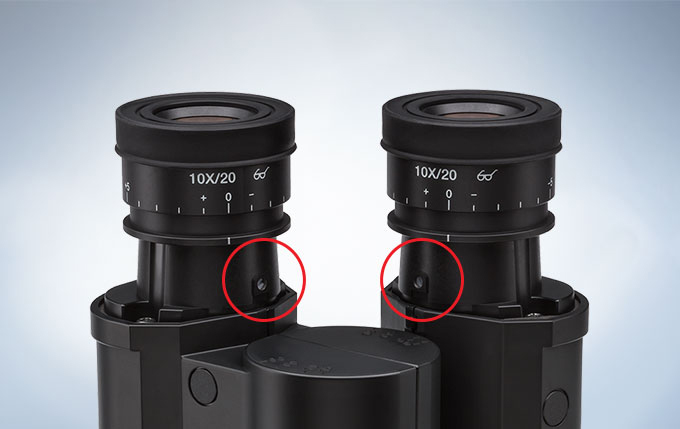 Fixed eyepieces 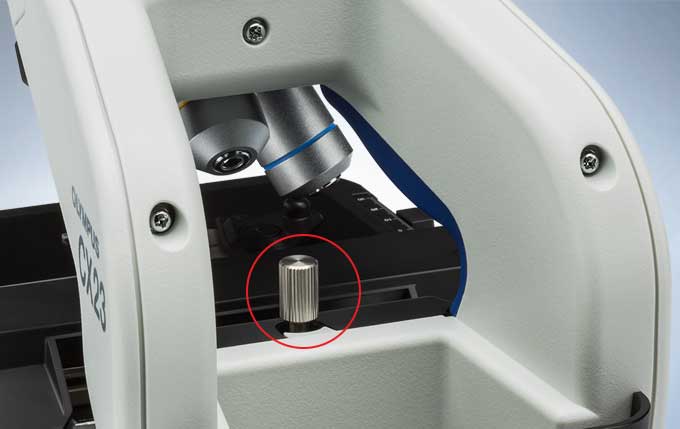 Focus lock 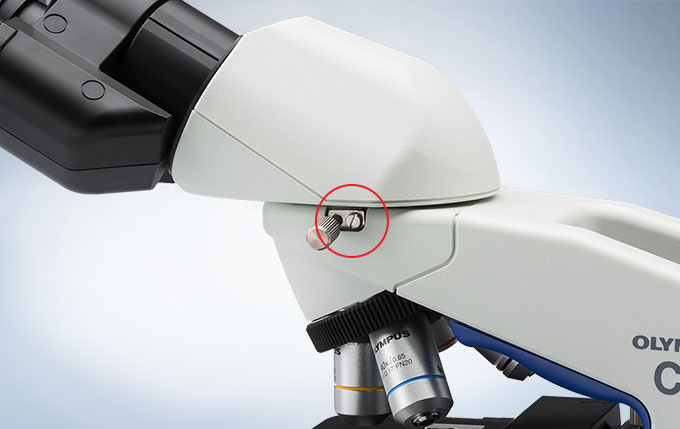 Locking pin | 3. Durability to Stand Up to the Rigors of the ClassroomAnother feature to think about is how rugged and durable the microscopes are. Since these units will be used in an educational environment, they will be manipulated by many students who most likely have no experience with microscopes. You will want to make sure that the microscopes can withstand some external force such as bumping, moving, or even dropping. Some built-in safety features—for example, fixed eyepieces, fixed objectives, and attached stage clips—reduce the risk of losing pieces that are necessary for the microscope to function. Many microscopes have observation heads that are detachable, which could lead to a potential drop during movement, but having a locking pin that secures the observation head to the frame helps prevent that. It is also important to protect your objectives from being damaged during observation. Having a focus lock feature can help protect the objectives from students accidentally overfocusing and crashing their sample into the objective. Many microscope manufacturers have also transitioned from halogen light sources to light-emitting diodes (LEDs). LEDs are very durable and long lasting. They radiate very little heat and the LED life span should go beyond the life span of the microscope. |
4. Ease of Use Is Key to Effective Teaching and Learning
Ease of use is possibly the most important feature a student microscope can offer. Most educators would prefer spending time teaching their lessons and observing slides instead of adjusting and optimizing each student’s microscope. Some microscope manufacturers offer fixed Köhler illumination, which will reduce the need to perform the Köhler set up on each microscope. Köhler illumination is a method used in microscopy for optimum specimen illumination. In more advanced classes, educators might want to teach the Köhler technique, so it’s nice to have a microscope that is flexible in this regard. As mentioned earlier, not having to assemble the microscope every time it’s used helps save educators time. Microscopes that enable students to simply plug in, turn on, adjust the eyepieces, and start viewing their samples are ideal.
5. Good Optics Contribute to a Quality Microscopy EducationOptics are the heart of any microscope. They help you visualize all the minor details in your sample, so it’s important that your microscope has high-quality optical components. Having a microscope that offers a large field of view while offering a flat image is very helpful because the students can see more of the sample at once, and the image will be in focus throughout the area. Having objectives with a few different magnifications offers more flexibility. This enables students to see the overview of a sample (low magnification) but also areas of interest up close (high magnification). Lastly, the light source is important to think about; as mentioned above, most manufacturers now use LEDs. LEDs provide even illumination throughout your sample and their color rendering brings out their true colors. |  |
6. Image Display and Sharing Facilitates Learning | |
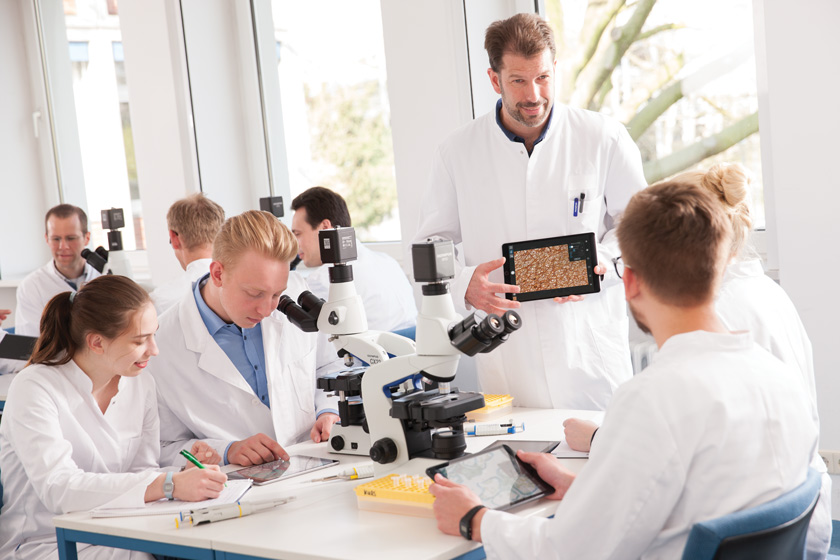 | Another nice feature to have for educational microscopes is the ability to attach a camera with wireless (WLAN) connection for easy image sharing or display. The flexibility offered by wireless connectivity improves efficiency, helping educators save time and reduce costs. In some instances, it can be convenient for the educator to quickly show their class an image on a slide. A digital camera can enable educators to share their microscope image in real-time with the whole class instead of having each student come up and look at the sample individually. Students can also use the digital camera to capture their slide images for later reference and to share them with their classmates. |
Make Sure That the Microscope You Choose Matches Your Needs
Microscopes can be helpful teaching tools, providing students with hands-on experience and enabling them to observe specimens in greater detail. There are many educational microscopes available, so I hope that this guide will help you choose the right microscope for your teaching goals.
Related Content:
4 Free Tools to Help You Choose the Right Microscope Camera
